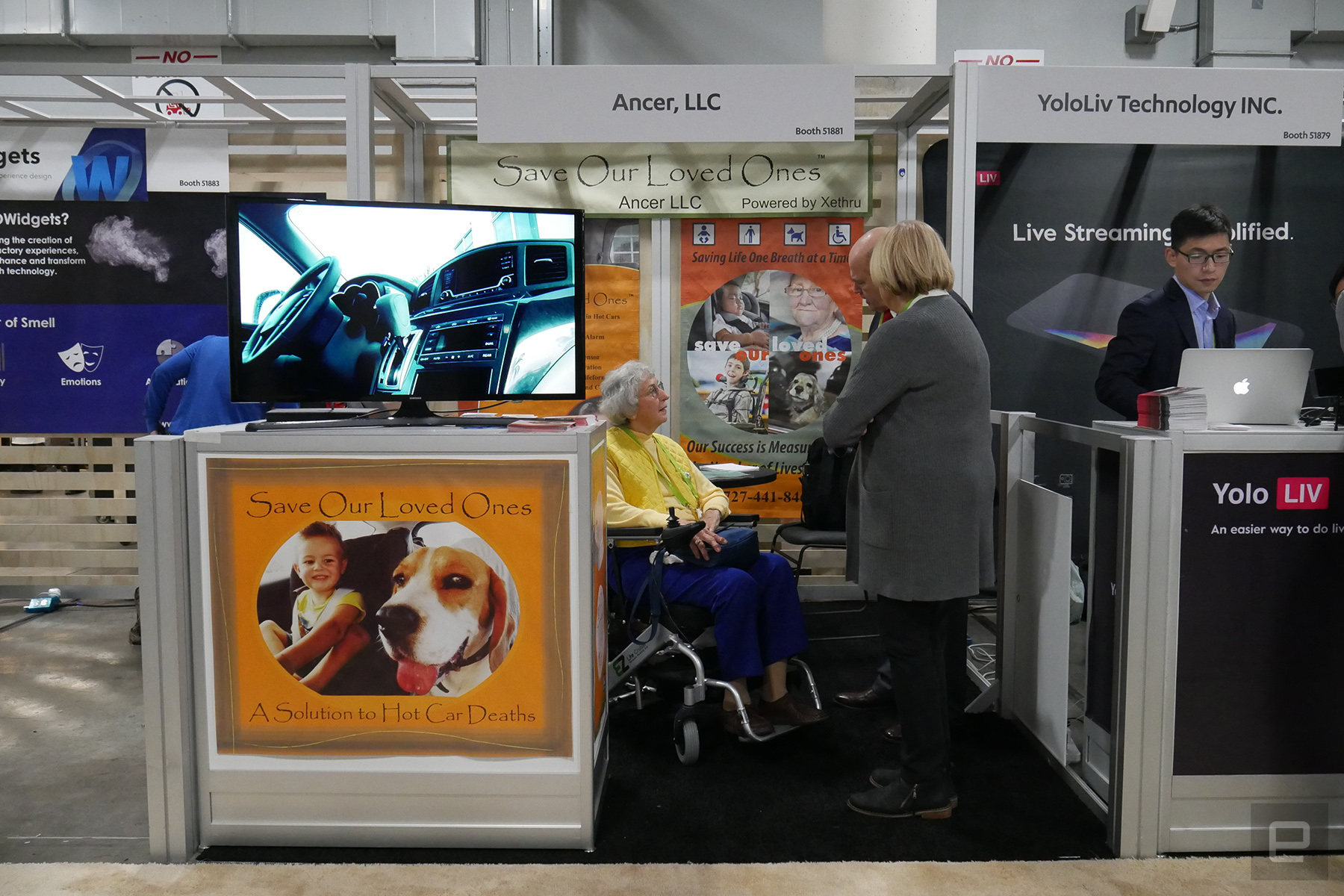Before the public find their way onto the show floor at CES, the Consumer Technology Association (CTA) President and CEO, Gary Shapiro and Senior Vice President Karen Chupka took to the stage to open the event and highlight some of the work they have been doing on behalf of this growing industry that seems to be going from strength to strength.
Like the industry, this show is a record breaker year after year; the largest business event in the world, occupying almost all the event space in Las Vegas. There are over 2.75 Million net square feet of exhibit space spread across various venues and more than 900 new startups in Eureka Park. One such startup at CES this year is an 82-year-old, Carol Staninger from Florida, who created SOLO, or Save Our Loved Ones, a device that prevents young people, seniors or pets left in a car from dying. Carol is a first-time exhibitor at CES.
It truly is an amazing event with government leaders from the US and around the world including ministers from Canada, Columbia, France, Nigeria and Japan present.
With over 300 square feet of automotive exhibition space, CES is now the fifth largest auto show in the US, testament to the importance of technology to the automotive industry and vice versa. Technologies like self-driving cars and collision avoidance could reduce accidents and save lives by taking most of the human error out of the equation. As well as saving lives and reducing accidents, the technology around mobility, particularly urban mobility, offers greater accessibility to disabled, older or disadvantaged people.
Connectivity is huge at CES and there’s no better example than the smartphone, with 2.4 Billion people using one in 2017, all wanting the best and fastest connection. That’s why 5G is such a large topic of conversation this year, with phenomenal speed comes all kinds of new applications to the device in your hand. 5G will increase speed by 100x and some estimates say that one-third of the world’s population could have 5G within five years, depending on how governments act. In fact, CES has a keynote panel entitled “How 5G will Enable the Future” and we’ll be reporting on that tomorrow.
In 1960, only one-third of the world’s population lived in cities, now it’s roughly half and by 2050 the UN expects that number to rise to two thirds. Big challenges come from this and many see smart cities as a chance to develop solutions to issues like congestion, air quality, security, and mobility. The smart cities trend goes much further than just those companies exhibiting in the CES Smart Cities marketplace, it touches almost every other part of the show and particularly the car makers as they move from producer to systems provider and mobility providers.
Tech is over 10% of the world’s GDP, and with that comes the responsibility to tackle issues like diversity, privacy, security, and employment. Technology is solving some of the world’s largest challenges. Gary offers the example of the Minnesota doctors who used VR to train for the procedure to separate conjoined twins. AI takes on jobs we don’t want to and can’t do and much more including searching for cures to long-term diseases or finding human trafficking victims. What’s more, tech is becoming eco-friendly. Consumer tech’s share of US home energy has actually fallen 25% since 2010, which is amazing given the increased number of devices in use. To great applause, Gary announced that the industry was committing to reducing product emissions in line with the Paris accord.
The issues of jobs and automation often go hand in hand and the CTA was pleased to announce that member companies had announced the creation of more than 200,000 new jobs, while a McKinsey study stated automation would boost the economy. Yes, some jobs may disappear, but others that we hadn’t heard of ten years ago, like Drone Operator, Robot Technician, App Developer and Data Miner, will grow. Turns out there are already more than 12 Million App Developers worldwide.
Technology is driven by innovation and since 2015 the CTA has compared all 50 US states’ ability to support and nurture innovation in its US Innovation Scorecard. Today the CTA announced its first International Innovation Scorecard, scoring 38 countries and the European Union. Innovation thrives in countries that embrace disruption and change, countries where diversity, freedom and individual right are cherished. The top thirteen countries are defined as Innovations Champions and the top five are Finland, the United Kingdom, Australia, Sweden and the United States. You can see all the numbers at www.internationalscorecard.com. This will be updated every year, and proof of this can be seen in Eureka Park where more than half of the innovators exhibiting are from overseas, many with the support of local and national governments and associations.
Gary closed his presentation talking about the important work they do with government, helping to guide legislation that protects consumers and encourages innovation. The CTA is working tirelessly to make sure technology is as accessible as possible, regardless of a person’s location, status or income. Judging by the number of government representatives present today, this relationship is symbiotic and appreciated by both sides.
The tech industry has much to offer the world and CES is a chance to see what it can do. It’s also a great chance to see the industry exploring the areas of responsibility and risk and dealing with those in an open and collaborative way.
Enjoy CES, more soon…
View Original Post Here

